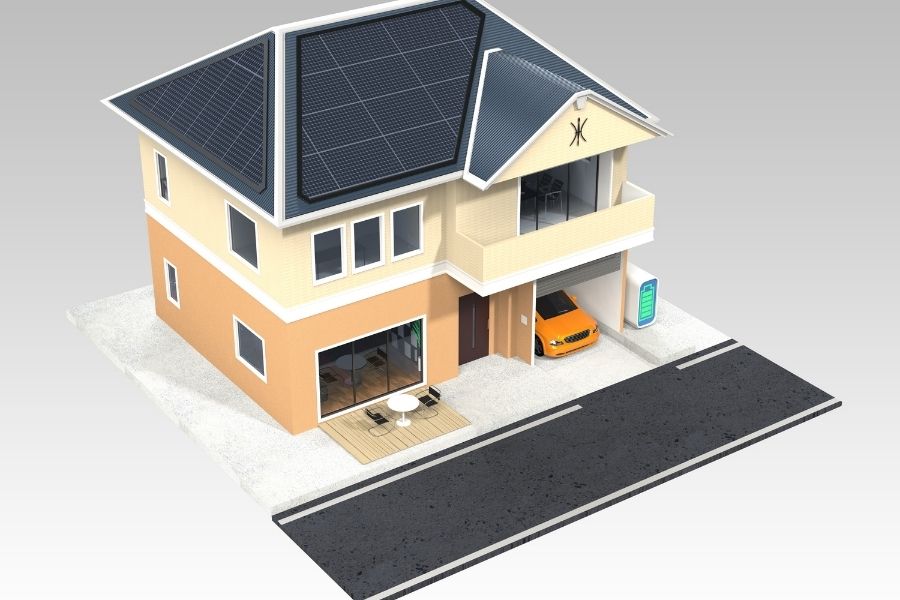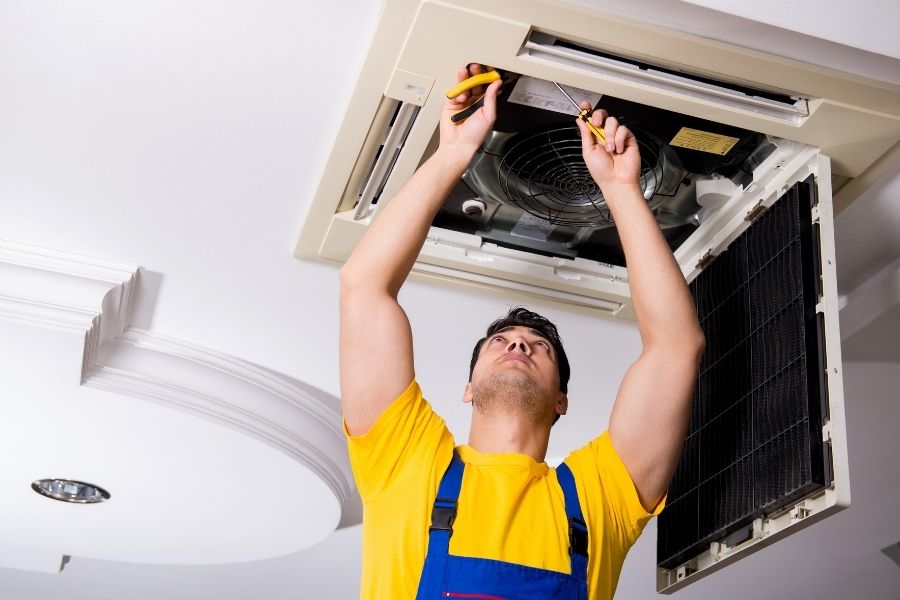What Happens When We Reach ‘Peak’ Solar in Australia?
Australia is in no doubt we’re right now amidst a solar revolution. Over the past decade (or so), we’ve seen a phenomenal growth in Australia’s...
5 min read
![]() Solar Trust Centre Team
:
Jan 20, 2022 9:00:00 AM
Solar Trust Centre Team
:
Jan 20, 2022 9:00:00 AM

For many of us, the installation of a rooftop solar system will undoubtedly be terrific, but also without much fanfare. Someone will browse for a system, then go ahead and buy one. The installers come along, put on a system, and then that’s about it! All in all, it’s a pretty simple process, and the simplicity of getting solar is a real asset for the many millions of our readers who reside in existing homes. Yet for those building a new home, there’s now the opportunity to have a rooftop solar system(s) integrated into the home’s architectural design.
There’s an array of architects who’re taking the integration of solar panels to the next level. They look to create homes in a way so that a solar system isn’t simply an addition, but a foundational feature of the home’s overall design and style. This new trend isn’t just inspiring from a design perspective, but very interesting from a practical perspective. Today’s cutting-edge architecture can help generate new ideas today that find themselves in widespread use tomorrow, and that’s why now is a great time to look in-depth at the phenomenon of solar architecture.
At its most basic definition, solar architecture is about factoring in the sun generally - and in this case, solar systems specifically! - when designing a home. Obviously, this definition is simple, but the actual implementation of this approach into a design process can be far more complicated. Architects must take into account a variety of considerations when looking to incorporate a solar installation into a home’s overall design such as its accessibility, durability, and how it shall relate to the landscape and other homes surrounding it.

A number of homes have been designed with the goal of placing solar panels on the roof that also features other components such as regular tiles. In certain instances, an architect could regard this as the ideal option, and so too the homeowner. But this path isn’t the only possibility out there when it comes to achieving a design with fantastic solar architecture.
Businesses offers solar tiling products. They allow for the home to have a rooftop solar system that is in effect ‘sunken’ to the same level as the other roof tiles, providing for a more seamless integration between solar and non-solar components on the roof.
There’s no doubt creating a new home with a solar installation as part of the design can be brilliant, but rooftop solar installations on the residence are not the only ways in which fantastic eco-friendly technology can contribute to a home’s sustainability.
In addition to the utilisation of a rooftop solar system on the primary residence - and a solar hot water heater to generate hot water for the home - many people have also found it beneficial to make use of solar power across other locations on their property, such as by adding another rooftop system to a detached garage. Some people have also opted for a ground-mounted installation which - while most often ideal for larger properties (think acreage) - can be a fantastic addition to a property that already has rooftop solar, or be terrific when used in its own right for properties where a rooftop installation may not be possible.

Alongside solar power installations, some properties can also be good candidates for wind power. This said, while wind power can be great, getting an installation done is typically a more complicated process. There’s the need to clear a number of hurdles surrounding the ideal height of the wind system, its location relative to surrounding elevated terrain such as hills and mountains, and other considerations.
Accordingly, while some low-lying wind power installations have been placed on residential rooftops across the world, it’s generally held that such systems are rarely effective, in comparison to where they could be installed elsewhere on a property which would yield a better rate of energy generation annually.
So while having a less-than-ideal wind power installation can certainly be better than not having wind power at all, one on a home may often be more of a design feature - a style statement by the property owner - rather than a really effective renewable energy source. Optimal wind power installations by contrast will typically reside at a distance from the home (both horizontally and vertically) to operate in a way that’s truly efficient.
In comparison to a century ago there are many features of a modern home that contribute to a more comfortable residence. But they’re not all eco-friendly, and finding a better way to use them in the 21st century will be essential to keeping our homes comfortable while also pursuing sustainable practices. Air conditioning [AC] is a key example of this.

There’s no disputing that AC is a fantastic invention. What’s more, as the Australian summer regularly serves up temperatures in the 30s and 40s Celsius across the country (that’s in the 80s to the low 100s for any of our readers who use Fahrenheit) there’s no doubt that AC needs to stick around. But at the same time, it’s also known that electrically powered heating, ventilation, and cooling (HVAC) uses a ton of energy.
In turn, that HVAC is often inefficient. The installation of a rooftop solar system can be a great contributor to the use of the AC becoming cleaner and greener, yet even if a rooftop system generates all power necessary to cover off the AC’s use, if there’s scope to reduce the need to use AC by virtue of smart(er) home design, then such a path is surely worth pursuing.
Many architects now look to the past for inspiration when designing new eco-friendly homes.
They seek to build residences that still feature AC certainly, but with an aspiration to make use of ‘natural’ AC components instead of a reliance on machines exclusively.
This approach is a reversal of a trend that’s been commonly seen since AC became widely available in the last century, where countless home designs more or less set aside any use of natural elements for AC. This road was taken with the knowledge that (electric) AC could be used by residents. This resulted in homes being built that are much hotter than they would otherwise need to be, and which can be a nightmare to be in if the AC breaks down on a summer’s day!
But now historic designs are making a comeback. For example, the utilisation of the jalis latticed screen - perhaps best known for its use in many traditional Indian homes - allows light to seep in during the day, but in a way that reduces how much heat transfers from outside to inside in comparison to a regular window. Including such a design within a home - or at least part of it - is not typically complex, but can provide a real benefit in driving down the heat, and the need to use AC accordingly.
Using natural AC design techniques is terrific, but they’re also not the only option available if looking to reduce reliance on machine-powered HVAC while maintaining a comfortable temperature in the home. There are a number of smart home products and techniques out there, and each can make a terrific contribution to a home becoming more eco-friendly, and more enjoyable to reside in.
Solar architecture is outstanding, but it’s also optional at present - and it could be said this is inhibiting its full potential, as well as Australia’s solar potential generally. There may be some inspiration for Australia accordingly across the Pacific Ocean. In recent years California made it mandatory for all new homes that are of 3 storeys or less to have solar panels installed.
Since then the law has been altered and it was made possible for some Californians to skip the rooftop requirement if they obtained their power from a solar farm. Nonetheless, the policy remains a worthwhile idea for Australia to consider. Given the immense popularity of solar the national capacity will continue to grow well regardless of whether it’s mandatory or not, but considering this for new homes could be a push in the right direction in terms of building our solar capacity further and faster.
For now though, just as anyone looking to design a new home could certainly find utilising some solar architecture delivers terrific outcomes, we at STC also remain of the view that any quality rooftop solar system installed atop a home actually looks pretty nifty! So for anybody yet to get solar who is currently considering it, it’s essential to remember the usefulness and eco-friendly credentials of a rooftop solar system is very much on-trend right now too
We highlight the latest, and most interesting solar industry new and stories. Check out our latest blog posts here.
.jpg)
Australia is in no doubt we’re right now amidst a solar revolution. Over the past decade (or so), we’ve seen a phenomenal growth in Australia’s...
.jpg)
Australia is a nation with a real love of solar power. After all, with it held there’s now around 1kW of solar power per person across the Great...